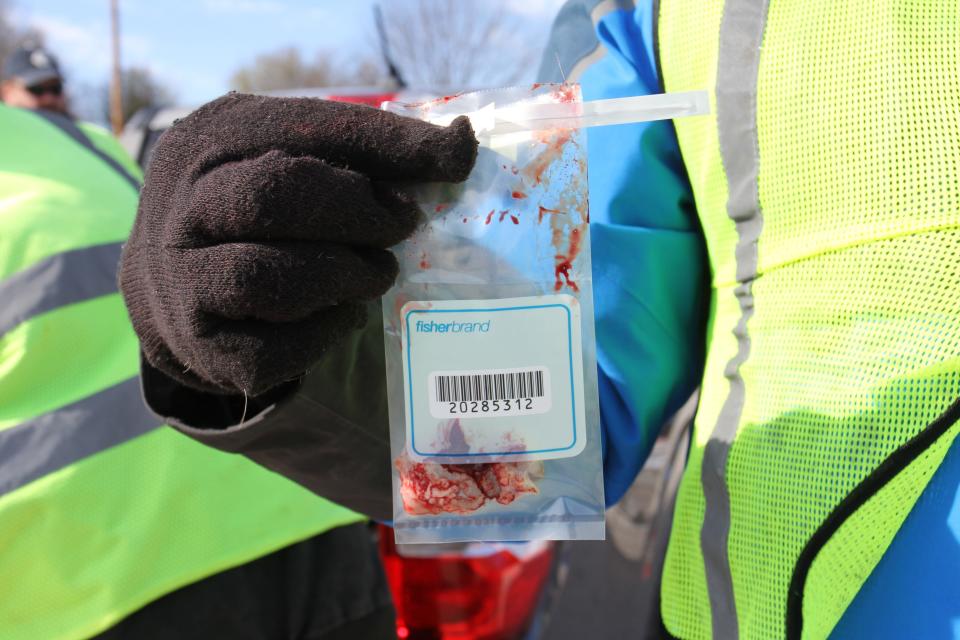Deer culling underway to 'slow the spread' of chronic wasting disease in Missouri
Targeted culling of Missouri deer is underway in areas where new cases of chronic wasting disease were found following the latest deer harvests.
The deer-hunting season wrapped up Jan. 15 with preliminary reporting from Missouri Department of Conservation showing a total of 299,721 deer killed.
Chronic wasting disease is a deadly, infectious disease in deer and other cervids. The disease eventually kills all animals it infects. The disease spreads through improper disposal of deer carcasses and through the environment where a deer comes into contact with infectious material from another deer.
Targeted culling is used as a 'disease management tool'

Targeted culling within two miles of where the disease has been detected is conducted from Jan. 16 to March 15. MDC's Cervid Program Supervisor Jason Isabelle told the News-Leader earlier this week that around 29,400 samples with roughly 830 more to go have been tested this year, and, so far, 74 came back positive from 21 counties in Missouri.
More:Final tally in Missouri's deer hunting season falls just short of 300,000
The targeted culling is done with landowners' permission either by themselves or by MDC staff. Some methods that are prohibited during deer-hunting season, including shooting over bait and shooting at night, are allowed during the targeted culling, Isabelle said. "Those methods allow for our culling efforts to be as effective and as efficient as possible."
Deer that are culled are tested for the disease. If the wasting disease is not detected in the culled deer, the landowner has the first opportunity to keep the deer meat themselves or donate it to Share the Harvest. Positive deer are disposed of, Isabelle said.
This past year, 3,000 deer were culled and 32 samples tested positive, with 86 total detected statewide.
The previous three years saw:
21 CWD-positive out of 2,396 deer culled with 46 total detected statewide in 2019;
18 CWD-positive out of 2,692 deer culled with 44 total detected statewide in 2020;
32 CWD-positive out of 3,072 deer culled with 86 total detected statewide in 2021.
"This is a disease management tool," Isabelle explained. "Targeted culling is a proven method of slowing the spread of CWD."
More:Missouri deer hunters weigh in on efforts to curb spread of chronic wasting disease
With targeted culling in those zones, fewer deer are interacting that may be infected with the disease and reducing the density of the population helps minimize the spread, he said.
No cure, currently, to fight chronic wasting disease

There's no cure for chronic wasting disease. And Isabelle said that, since people may not see many emaciated deer, they may think there's nothing to worry about.
"CWD has an extended incubation period in the deer, so if a deer has CWD, it's typically going to be a year-and-a-half to two years where it has the disease before it's going to start to show clinical symptoms," Isabelle said.
More often, as the deer's brain starts deteriorating because of the disease, it may start wandering more, making it vulnerable to hunters, being hit by vehicles or killed by predators, which "elevates their mortality rate," Isabelle said.
"Most of the deer that die with CWD are not dying of the actual disease itself because it predisposes them to die from other causes," Isabelle said. "If a deer happens to live long enough and nothing else kills the deer, then by the time it gets in the clinical stages, it starts to become emaciated (and) it starts with excessive salivation. It has its head lowered; its ears are lowered. It's wasting away."
This article originally appeared on Springfield News-Leader: Deer culling underway in effort to 'slow the spread' of CWD

